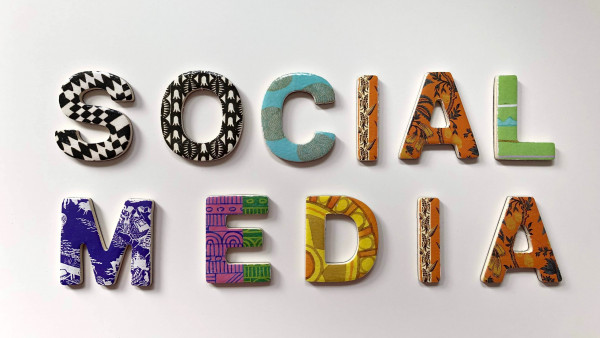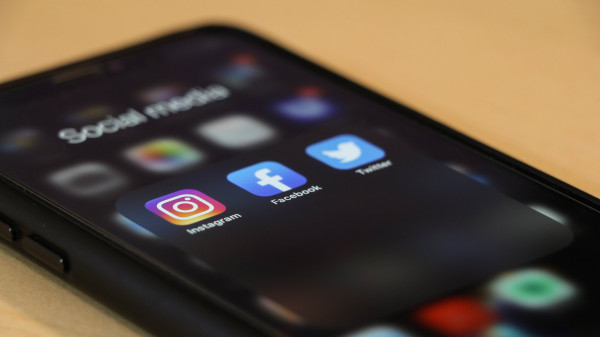Issue 72: Body Image, Social Media and Eating Disorders - Part 1
About this resource
Introduction of new NEDC body image fact sheet
Associate Professor Rachel F. Rodgers
Emeritus Professor Susan Paxton
Editor's Note:
Body image, social media and eating disorders are a growing topic of concern in the community and a very personal issue for many people of all ages, sizes, shapes, abilities, gender identity, sexual identity, cultural identity and economic background.
Body image is ranked in the top three concerns for young people in Australia (Tiller et al., 2020). Billions of people worldwide use social media, many daily and for hours at a time, and research has shown that social media use is associated with increased body dissatisfaction and disordered eating. (Holland & Tiggemann, 2016).
In tackling such an increasingly important theme, we are taking a different approach and will be continuing this conversation with our members in our next eBulletin. In this edition, Issue 72, we will outline the problems associated with the intersection of body image, social media and eating disorders and, in Issue 73, look at some solutions.
For the latest information on body image, NEDC has produced an updated fact sheet available to download. Read more here.
Three internationally renowned body image media researchers answer NEDC’s questions about the essentials of research on body image and social media:
- Boston’s Northeastern University Associate Professor Rachel F. Rodgers outlines what the latest research is revealing among different demographic groups, noting “it is important to identify strategies to help adolescents engage with social media in positive ways”. Read it here.
- Emeritus Professor in the La Trobe University School of Psychology and Public Health Susan Paxton discusses the effectiveness of evidence-based prevention and early intervention programs and how social media itself may be utilised to mitigate the risks inherent in its use. “There is evidence that greater social media literacy protects against the negative impact of viewing idealised social media images,” she writes. Read it here.
- Flinders University's Senior Research Fellow in Psychology Dr Simon Wilksch explains how media internalisation can be a risk factor for young people, how the effects of social media on body image can be measured, and the applications of his Media Smart Schools program. “It was a consistent finding that having social media accounts was associated with higher disordered eating for both girls and boys,” he writes of a recent study. Read it here.
NEDC members may also choose to participate in studies on our site, such as I Am Media Smart, Attitudes towards help seeking for eating and body image concerns and Can you see me?” Understanding videoconferencing and body image concerns during COVID-19 social distancing.
Remember – the NEDC is all about collaboration and connection. Please share this eBulletin with colleagues and friends. Your input and your voice matter to us. You can contact us at info@nedc.com.au. You can also participate through membership to the NEDC - JOIN US.
New NEDC body image fact sheet
As part of our website redesign, the NEDC are embarking on a program of updating our resources, kicking off with a new range of fact sheets. Our four-page body image fact sheet is the first to be released, and it clearly and concisely explains:
- What is body image?
- What is positive body image or body acceptance?
- What are the four aspects of body image?
- What is body dissatisfaction?
- What are the signs of body dissatisfaction?
- Why is body dissatisfaction a serious problem?
- Who is at risk of body dissatisfaction?
- Body image and the media
- How can you improve your body image?
- Getting help
Available in downloadable PDF form, the fact sheets are useful for people with lived experience and their carers and supports to better understand what they are going through, and for clinicians and health practitioners to increase literacy and awareness of eating disorders in their clients and patients.
We will keep you informed online and on social media as new fact sheets become available. Follow us on Facebook, Twitter, Instagram and LinkedIn.
Associate Professor Rachel F. Rodgers – Emerging evidence
Your research focus is on sociocultural influences on body image and eating concerns. Can you outline what the research is telling us about the links between body image, eating disorders and social media?
Social media is a highly visual environment, with a strong focus on self-presentation. Unsurprisingly, therefore, evidence is increasingly emerging for a relationship between social media use, particularly appearance potent and photo-based social media, and higher levels of body image and eating concerns. These relationships are most likely complex and bidirectional. Furthermore, social media is not homogenous and different platforms, user motivations, types of engagement, and critical social media literacy skills, may all modulate this relationship.
How much does media exposure and internalisation of thin ideals affect women, from early childhood, youth and old age? Does it change over time?
This is such an important question, but also a complex one! It is difficult to disentangle developmental and cohort effects for instance. Do differences between midlife women and adolescents reflect age differences, or the fact that today’s teenagers grow up in an entirely different media environment to the one that existed several decades ago? Perhaps one of the most important things the literature highlights, is that media affects groups regardless of age. More work is needed to better identify critical periods for internalization of media messages, but it likely occurs very early on.
You have studied male college students in ‘Body image and body change behaviors associated with orthorexia symptoms in males’ (White et al., 2020), and older men in ‘A review and integrated theoretical model of the development of body image and eating disorders among midlife and aging men’ (Matsumoto & Rodgers, 2020). Does research suggest that social media has a role in increased disordered eating rates in these cohorts?
The extant data on the ways in which boys and men use social media and its relationships with body image and eating concerns are scarce compared to those among women. The emerging evidence points to the fact that social media is a relevant factor for these concerns across genders, but we need to better understand these relationships among men and gender minorities.
You worked on establishing the protocol of the SoMe social media literacy body image and wellbeing program for adolescent boys and girls in Australian secondary schools (here, Gordon et al., 2020). What social media strategies work to help adolescents with managing body image and eating issues?
Given the role of social media in the lives of youth and the mounting evidence for its potential to be harmful, it is important to identify strategies to help adolescents engage with social media in positive ways. It is early days, but these strategies likely involve being an active and critical user of social media, learning protecting filtering techniques, and minimising engagement with content that promotes diet culture and appearance as a core aspect of self-worth.
You work in the US and frequently collaborate with Australian researchers. Are there different approaches to eating disorders research in the two countries?
I think I see more commonalities than differences. All of my colleagues are strongly committed to the field and work tirelessly to advance our capacity to prevent these issues across groups, and to help those who experience disordered eating and eating disorders.
The work of your Northeastern team at Virtual ICED 2020 included such topics as the detrimental effects of selfies, body image and sexual minority men, the muscular ideal and male body dissatisfaction, trials of social media literacy intervention Reel2Real in the US and Australia, and studies on the beauty ideal in Black women and body image and Japanese women. What upcoming projects are you excited about?
Our current work is building upon these areas and extending our understanding of the relationships between different types of social media and body image, with a particular focus on social media that can be helpful and promote positive body image. We are hoping to understand more about exactly which types of social media content may be most helpful, and uncover some of the mechanisms for these effects, as well as looking at specific demographic groups. We also have some other exciting projects focused on body image and eating concerns among minority groups (gender minorities, biracial individuals), high risk groups such as athletes or women in the perinatal period. In addition, we have been conducting some research related to the effects of the pandemic on various dimensions of eating behaviours, which is of course a timely area of focus.
Rachel F. Rodgers, PhD is an Associate Professor in the Department of Applied Psychology at Northeastern University, Boston. Her research interests are in the area of body image, disordered eating and adolescent/young adult psychopathology, in particular focusing on sociocultural influences on body image and eating concerns. Her research aims both to examine socio-cultural determinants of health-related behaviors to guide prevention and intervention but also to generate research which may inform public policy.
Professor Susan Paxton - Essential research
You have been President of both the Australian and New Zealand Academy for Eating Disorders (ANZAED) and the Academy for Eating Disorders (AED), are a Director of the Butterfly Foundation, have served on government advisory boards and continue to work in research, where your current focus is the development of body image and disordered eating behaviours. What changes have you seen in the eating disorders field?
Although there have been many changes over the last 25 years, and I mention just a few, it is also true that too many things have stayed the same. The development of family-based treatments for anorexia nervosa has been significant, and within Australia, access to this treatment approach has also improved. Cognitive behavioural therapy is still the cornerstone of most treatment of bulimia nervosa and binge eating disorder, although CBT-E has made for more individualised treatment. In addition, other treatments have been trialled, such as Acceptance and Commitment Therapy, but more work needs to be done to improve treatment effectiveness. Changes in Medicare funding have improved access to treatment but easy and affordable access to treatment for eating disorders of all kinds is still an issue, especially outside metropolitan areas. Growing use of online delivery modes, especially resulting from COVID-19, will be crucial to extending treatment access.
Community awareness and understanding of eating disorders has improved but there is still a long way to go in this respect, and there is still very strong stigma associated with eating disorders which reduces treatment seeking. There is a greater scientific understanding of weight stigma and its negative consequences, but there have been few advances in bringing about community attitude change. There has also been a recent rapid advancement in our understanding of eating disorders in males and gender-diverse groups and interventions are starting to be adapted to better meet the needs of these groups.
What are the risk factors for the development of body image disorders and eating disorders? How does social media impact on these risk factors?
Before considering this question, it needs to be noted that every individual has a unique path in the development of an eating disorder and risk factor models look at general patterns. My research group uses a biopsychosocial model to conceptualise risk factors for the development of body dissatisfaction and eating disorders. Although we recognise the important role of genetic and biological factors, we have been particularly interested in exploring potentially modifiable psychological risk factors, including depressive symptoms, low self-esteem and perfectionism, as well as sociocultural appearance-focused influences, including pressure from family, peers and media to meet appearance ideals. These factors work in part by increasing the importance placed on meeting appearance ideals and comparisons made with others that result in negative self-appearance appraisals that motivate disordered eating behaviours.
Social media use is a sociocultural factor that may intensify pressure to conform to thin or muscular appearance ideals. In particular, if a person spends time engaged in photo-based activities on social media, either passively viewing or actively curating images to post, their belief that their own self-worth is tied to the extent to which they meet appearance ideals presented on social media, is likely to be increased, contributing to greater body dissatisfaction and subsequent disordered eating or eating disorders. People tend to post carefully selected images, so viewers are not typically seeing the reality of the poster’s appearance or life. But they still may compare their own life or appearance with the unreal one they are viewing.
You contributed to the study published in The Journal of Youth and Adolescence, ‘Social media, body satisfaction and well-being among adolescents: A mediation model of appearance-ideal internalization and comparison’ (Jarman et al., 2020), which concluded that “Social media was positively associated with poor body satisfaction and well-being; comparisons and, to a lesser extent, appearance-ideal internalization, were mediators; and the model demonstrated gender equivalence across adolescent boys and girls”. What can be done to reverse these trends?
This is great research being conducted by my PhD student, Hannah Jarman, much as I would like to take credit for it. Unfortunately, I think it is true to say that we don’t yet know how to reverse these trends. One strategy we have been exploring is to increase social media literacy. Social media literacy refers to being empowered with knowledge and skills to analyse, evaluate, produce and participate in social media. It includes understanding and critical analysis of commercial aspects of social media such as targeted advertising, and peer contexts such as the nature of self-presentation on social media. There is evidence that greater social media literacy protects against the negative impact of viewing idealised social media images so we have suggested that increasing this critical ability could have a positive impact. In a pilot trial of a classroom-based social media literacy intervention, we had promising results. We have yet to finalise results from a larger randomised controlled trial, but they are not looking as strong. Given the ubiquitous nature of social media, numerous ongoing approaches are likely to be needed to have a genuine and lasting impact.
How can social media itself be utilised to mitigate the risks inherent in its use?
I am sure creative people will find ways to use social media to mitigate the risks. The Body Positive movement posts unaltered images of themselves to create realistic targets for comparison. In addition, some influencers have used social media to send itself up by posting entertaining skits of the process of curating images to post, which provides a form of social media literacy education. The difficulty with these approaches is that there is no way to ensure that a person will view these posts. Another approach is to put advertising on social media that encourages help-seeking for eating disorders, perhaps targeted at high-risk groups such as adolescent girls.
You have created several well-received programs including Happy Being Me, Set Your Body Free* and Confident Body, Confident Child. Tell us about the program components that you see as most effective. How effective are evidence-based prevention and early intervention programs?
In each of these programs, we have endeavoured to provide ways to counter the most relevant risk factors for the target group, children, adolescents, young adults and women in midlife. The approach has varied, so in Confident Body, Confident Child we have worked with parents of young children to help them build a positive appearance environment for their child, while in Set Your Body Free, a CBT treatment program, we use a small group approach to help participants challenge and change maladaptive attitudes and behaviours. Evidence-based prevention to non-symptomatic individuals can bring about improvements in risk factors but it is frequently difficult to assess the long-term impact of this. However, when participants who have existing body image and eating disorder symptoms receive an intervention, the positive impact is typically very large. As the program is directly relevant to them, and they have usually chosen to be involved, they are motivated to make changes and to explore new ideas.
Your article, ‘Body image in the context of eating disorders’ (McLean & Paxton 2018) noted that “body image constructs including overvaluation of weight and shape, fear of weight gain, and preoccupation with weight and shape constitute core eating disorder psychopathology” and that “future directions for intervention require expanded reach to meet the needs of underserved populations, such as men, and people with higher body weight”. How can people of all genders, ages and backgrounds be included in programs that aim to reduce body dissatisfaction and eating disorders?
It is only recently that it has been recognised that people of all genders, ages and backgrounds suffer from these problems. However, frequently the specific needs of these groups, both in terms of content and approach, have yet to be identified. Once effective interventions have been identified, widespread training will be required. Even now, it is concerning that relatively few clinicians are well equipped to address body image and eating disorders in mainstream populations, and still fewer are sensitive to the needs of more diverse groups.
* To receive a copy of Set Your Body Free, or the Happy Being Me Facilitator’s manual and other related resources, contact susan.paxton@latrobe.edu.au)

Susan Paxton is Emeritus Professor in the School of Psychology and Public Health, La Trobe University. Her research focuses on understanding risk factors for the development of body image and eating problems and the development and evaluation of prevention and intervention programs based on risk and maintaining factors. She is a past President of the Academy for Eating Disorders and the Australian and New Zealand Academy for Eating Disorders and has been awarded the Academy for Eating Disorders Leadership Award for Research (2013) and the Australian and New Zealand Academy for Eating Disorders Lifetime Achievement Award (2018) for her contributions to eating disorder research. She is a Director of the Butterfly Foundation.
Dr Simon Wilksch – Reducing risk
What is media internalisation and how does it affect young people?
Media internalisation refers to when a person invests strongly in societal ideals of size and appearance, to the point that they become rigid guiding principles. This has previously been thought to be a thin-ideal for girls and women and a muscular ideal for boys and men. But there is likely greater complexity than this. Internalisation has been found to be predictive of a range of other eating disorder risk factors (e.g., body dissatisfaction, dieting, depressive symptoms) as well as the core thinking part of an eating disorder, placing excessive importance on weight and shape. Media internalisation is the risk factor target for Media Smart.
How do you measure the effects of social media on body image?
We use a range of validated questionnaires that are commonly used in the field. We particularly focused on Facebook, Instagram, Snapchat and Tumblr usage. We then look at statistical relationships between measures of social media usage and indicators of body image, eating disorder thoughts and behaviours.
What is the relationship between social media and disordered eating?
We have examined this relationship with data from 996 girls and boys in Years 7 and 8 from Adelaide and Perth. Just about every account type was associated with greater likelihood of eating disorder thoughts and behaviours. Having more social media accounts was associated with higher levels of disordered eating thoughts and behaviours.
So far, we have only looked at the relationship between the two measured at the same time point. We next plan to look at the relationship between the two over time (e.g., is social media use in early adolescence predictive of eating disorder symptoms one year later and vice versa).
Are there gender differences in how social media can affect a person’s body image?
It was a consistent finding that having social media accounts was associated with higher disordered eating for both girls and boys. The amount of time girls spent on Snapchat and Instagram was associated with higher disordered eating behaviours for girls but not boys. Similarly, girls posted more pictures of themselves, friends, celebrities and food than boys did. It could be speculated that these types of images are more prone to increased focus on appearance.
What are risk factors identified in your studies linking social media and body image concerns?
Our study was an exploratory examination of the relationship between social media and disordered eating thoughts and behaviours. Our findings suggest that there could be value in having limits on the number of accounts young people have and the amount of time they spend on social media. Further, prevention programs that teach media literacy are likely to be beneficial. We have updated our Media Smart schools and our Media Smart Online program to address this.
Tell us about the Media Smart program, your work with schools and your plans for future applications of the program.
The Media Smart Schools program has been evaluated in a number of large trials with over 3,000 Grade 7 and 8 girls and boys. It is one of the leading international classroom-based eating disorder risk reduction programs found to reduce a range of eating disorder risk factors. Importantly, benefits for shape and weight concern for girls have been found at both 12-month and 2.5-year follow-up, suggesting the benefits of the program are sustained afterwards.
I am currently collaborating with Rachel Lawson and her team in NZ to examine the effectiveness of the program when it is delivered by educators with a wellbeing background (rather than psychologists or trainee psychologists). Similarly, at a local Adelaide college we are investigating how the program works when delivered by teachers to Grade 6 and Grade 8 students. These projects are aimed at assessing Media Smart’s value in ‘real world’ delivery settings with a view towards building towards greater dissemination of the program. Media Smart is available for schools here.
The current climate, including times of transition – starting/finishing school or university, dealing with COVID-19 changes – can add to risk factors for EDs. How can I Am Media Smart help young people struggling with eating disorder symptoms?
Media Smart Online is a free, confidential, fully online program that has previously been found to be very helpful for 18-25 year-old women with mild body image concerns through to those with an eating disorder. The I am Media Smart trial is open to 13-25 year-olds of any gender who wish to improve their body image. A $30 gift voucher is provided to those who complete all four questionnaires. In this climate of uncertainty, COVID lockdowns, major life transitions, increased social isolation and long waiting lists for treatment services, an effective online program is a very useful resource. Recruitment is open until the end of May, so we would encourage anyone who is interested to find out more at: https://mediasmart.flinders.edu.au/

Dr Simon Wilksch is a Senior Research Fellow in Psychology at Flinders University leading research projects in eating disorder risk factors, prevention, early intervention and improving treatment experience and outcomes for patients and their families. He is also investigating the relationship between social media use and disordered eating in young adolescents. He is Clinic Director at Advanced Psychology Services, a team of 10 psychologists helping people experiencing an eating disorder.
References and further reading:
Carrard, I., Rothen, S., & Rodgers, R. F. (2020). Body image and disordered eating in older women: A Tripartite Sociocultural model. Eating Behaviors, 38, 101412.
Gordon, C. S., Rodgers, R. F., Slater, A. E., McLean, S. A., Jarman, H. K., & Paxton, S. J. (2020). A cluster randomized controlled trial of the SoMe social media literacy body image and wellbeing program for adolescent boys and girls: study protocol. Body image, 33, 27-37.
Holland G, Tiggemann M. (2016). A systematic review of the impact of the use of social networking sites on body image and disordered eating outcomes. Body Image, 17, 100-110.
Jarman, H. K., Marques, M. D., McLean, S. A., Slater, A., & Paxton, S. J. (2021). Social media, body satisfaction and well-being among adolescents: A mediation model of appearance-ideal internalization and comparison. Body Image, 36, 139-148.
Matsumoto, A., & Rodgers, R. F. (2020). A review and integrated theoretical model of the development of body image and eating disorders among midlife and aging men. Clinical Psychology Review, 81, 101903.
McLean, S.A. & Paxton, S.J. (2019). Body image in the context of eating disorders. Psychiatric Clinics of North America on Eating Disorders, 42, 145-156.
McLean, S. A., Wertheim, E. H., Masters, J., & Paxton, S. J. (2017). A pilot evaluation of a social media literacy intervention to reduce risk factors for eating disorders. International Journal of Eating Disorders, 50(7), 847-851.
Rodgers, R.F., Slater, A., Gordon, C.S., McLean, S.A., Jarman, H.K., & Paxton, S.J. (2020). A biopsychosocial model of social media use and body image concerns, disordered eating, and muscle-building behaviors among adolescent girls and boys. Journal of Youth and Adolescence, 49, 399–409.
Saul, J. S., & Rodgers, R. F. (2018). Adolescent eating disorder risk and the online world. Child and Adolescent Psychiatric Clinics, 27(2), 221-228.
Tiller, E., Fildes, J., Hall, S., Hicking, V., Greenland, N., Liyanarachchi, D., & Di Nicola, K. (2020). Mission Australia Youth Survey Report 2020. Retrieved from https://www.missionaustralia.com.au/publications/youth-survey/1717-mission-australia-youth-survey-report-2020/file.
White, M., Berry, R., & Rodgers, R. F. (2020). Body image and body change behaviors associated with orthorexia symptoms in males. Body Image, 34, 46-50.
Wilksch, S. M., O'Shea, A., Ho, P., Byrne, S., & Wade, T. D. (2020). The relationship between social media use and disordered eating in young adolescents. International Journal of Eating Disorders, 53(1), 96-106.
Wilksch, S. M., O'Shea, A., & Wade, T. D. (2018). Media Smart‐Targeted: Diagnostic outcomes from a two‐country pragmatic online eating disorder risk reduction trial for young adults. International Journal of Eating Disorders, 51(3), 270-274.
Continuing the conversation
Look out for the next edition of our eBulletin, Issue 73: Body Image, Social Media and Eating Disorders: Part 2, due in May. We interview Australians making strides with AI technology and in-app product developments as they search for solutions to the issues raised by body image and social media.
- Dr Gemma Sharp, founder and leader of the Body Image Research Group at the Monash Alfred Psychiatry Research Centre and creator of the body image chatbot KIT,
- Butterfly Foundation Communications Manager Alex Cowen.




